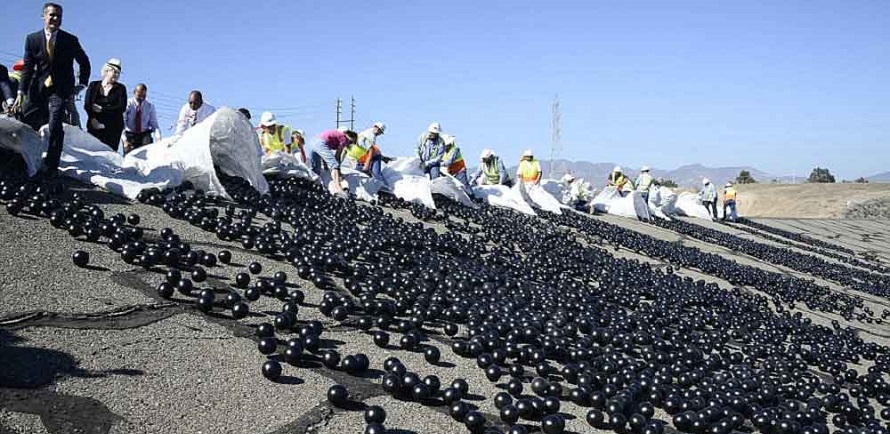The city of Los Angeles has dumped millions of small black balls into the city’s reservoirs in an effort to protect the city’s water supply.
[Alexandra Sifferlin / TIME]
The 4-inch balls — treated with a chemical to block UV light and designed to last up to 25 years — are also expected to save $250 million compared with another method of complying with clean-water laws.
[Arden Dier / USA TODAY]
‘In addition to cutting back on the need to chemically treat our water to prevent natural occurrences like algae, these shade balls are a cost-effective way to reduce evaporation each year by nearly 300 million gallons, enough to provide drinking water for 8,100 people for a full year,’ added Councilman Mitch Englander.
[Ellie Zolfagharifard / DAILYMAIL UK]
The shade balls can last about 10 years before the LA Department of Water and Power will remove, recycle and replace them.
[Kaylee Heck / ABC NEWS]
But wait, how do they work? This infographic from Time(dot)com explains:
Top image: About 20,000 polyethylene balls released into the Los Angeles reservoir at the Van Norman complex in Sylmar, California.
Credit: theguardianGene Blevins/Rex Shutterstock
Infographic credit: Time dot com












Comments